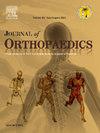骨髓抽吸物浓缩物注射与其他膝关节骨关节炎注射疗法的并发症发生率比较:系统回顾和荟萃分析
IF 1.5
Q3 ORTHOPEDICS
引用次数: 0
摘要
背景骨髓抽吸物浓缩物(BMAC)注射治疗膝关节骨性关节炎(OA)的并发症尚不十分清楚,本研究通过与其他注射方法的比较对其进行了调查。方法在PubMed、Embase、Cochrane和Web of Science数据库中搜索了将分离的骨髓抽吸物浓缩物(BMAC)注射治疗膝关节OA与其他注射方法进行比较的随机对照试验(RCT)。收集了人口统计学、并发症和比较注射疗法。计算了BMAC的并发症发生率和伤害需要数(NNH)。DerSimonian-Laird随机效应模型使用几率比评估了早期(≤7天)和晚期(>7天)并发症发生率的差异。平均随访时间为 13 个月。BMAC 组和对比组的总并发症发生率分别为 41.91% 和 41.25%(P = 0.85)。BMAC 的 NNH 为 152。膝关节积液是 BMAC 最常见的并发症(18.26%)。BMAC 的早期和晚期并发症发生率与其他注射剂(透明质酸 [HA]、类固醇、富血小板血浆、基质血管成分、间充质基质细胞或生理盐水)无显著差异(早期 p = 0.09,I2 = 0;晚期 p = 0.结论BMAC 注射的并发症发生率与其他注射剂无显著差异,与 HA 治疗膝关节 OA 的并发症发生率也无显著差异。与其他注射剂相比,152 名患者接受 BMAC 注射后才会出现并发症。本文章由计算机程序翻译,如有差异,请以英文原文为准。
Complication rates of bone marrow aspirate concentrate injections versus other injectable therapies for knee osteoarthritis: A systematic review and meta-analysis
Background
Complications of bone marrow aspirate concentrate (BMAC) injections for knee osteoarthritis (OA) are not well known and were investigated through comparison to other injections.
Methods
PubMed, Embase, Cochrane, and Web of Science databases were searched for randomized controlled trials (RCTs) comparing isolated BMAC injections to other injectables for knee OA. Demographics, complications, and comparator injectable treatments were collected. Complication rates and number needed to harm (NNH) were calculated for BMAC. DerSimonian-Laird random-effects models evaluated differences in pooled early (≤7 days) and late (>7 days) complication rates using odds ratios.
Results
Six RCTs were identified with 860 patients, 334 of whom received BMAC injections. The mean follow-up was 13 months. The overall complication rates among BMAC and comparison groups were 41.91 % and 41.25 %, respectively (p = 0.85). The NNH for BMAC was 152. Knee effusion was the most common complication of BMAC (18.26 %). Early and late complication rates for BMAC were not significantly different from other injectables (hyaluronic acid [HA], steroids, platelet-rich plasma, stromal vascular fraction, mesenchymal stromal cells, or saline) (early p = 0.09, I2 = 0; late p = 0.46, I2 = 0), nor specifically compared to HA (early p = 0.76, I2 = 0; late p = 0.66, I2 = 0).
Conclusions
Complication rates of BMAC injections are not significantly different from other injectables, nor specifically from HA for knee OA. Compared to other injections, 152 patients would need to receive a BMAC injection for one additional patient to experience a complication.
求助全文
通过发布文献求助,成功后即可免费获取论文全文。
去求助
来源期刊

Journal of orthopaedics
ORTHOPEDICS-
CiteScore
3.50
自引率
6.70%
发文量
202
审稿时长
56 days
期刊介绍:
Journal of Orthopaedics aims to be a leading journal in orthopaedics and contribute towards the improvement of quality of orthopedic health care. The journal publishes original research work and review articles related to different aspects of orthopaedics including Arthroplasty, Arthroscopy, Sports Medicine, Trauma, Spine and Spinal deformities, Pediatric orthopaedics, limb reconstruction procedures, hand surgery, and orthopaedic oncology. It also publishes articles on continuing education, health-related information, case reports and letters to the editor. It is requested to note that the journal has an international readership and all submissions should be aimed at specifying something about the setting in which the work was conducted. Authors must also provide any specific reasons for the research and also provide an elaborate description of the results.
 求助内容:
求助内容: 应助结果提醒方式:
应助结果提醒方式:


